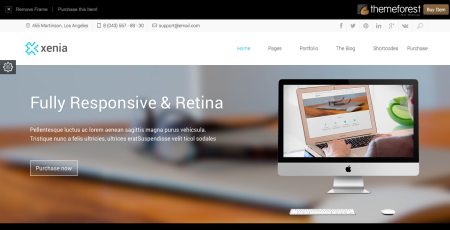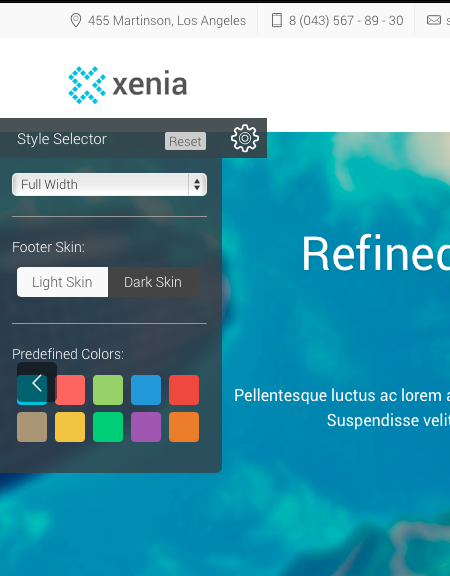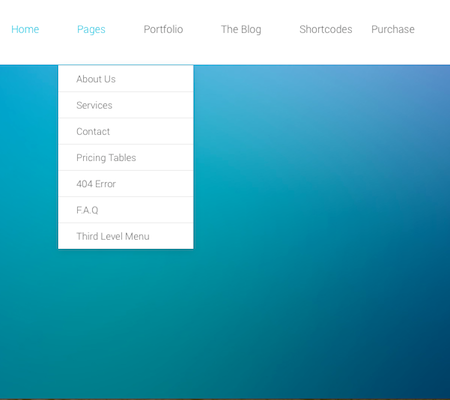 we are
we are

A lot of talk has been streaming through the industry about template website design. What is it? What makes it different than a custom website design? How do you know if a template is right for you?
A website design theme is essentially a predesigned website. A theme will consist of several different page templates for different types of content, which makes it adaptable for most basic website needs.
Most template sites come equipped with a homepage design, internal page design, blog template, and portfolio update. Lately, themes have been designed to include several different options for each page type (i.e. you can choose from 3 or 4 different homepage slideshows and choose an internal page with a variety of different sidebar highlight options.)

So, what makes these theme websites different from a custom website design? Put simply, they are NOT custom. A custom design is designed from the ground up. You start with a basic wireframe and then pull in a graphic designer to create brand new website design specific to your brand.
When implementing a theme design you cut out all custom graphic design work. This means a few different things for your new website.
You are limited to the design and layout of the theme you choose. Good news is that there are thousands of different themes out there, all with a variety of different layout and content area options.
It is important to find one that fits your content needs, but keep in mind that you do not need to fill in all of the available content areas. You cannot however create more content areas in a theme without some custom work. If you need more content areas or a different layout that what you can find online, then a custom website design is a must.
Think of each theme as a wireframe layout of your future website. If you can find a theme that fits your content needs and you find the layout appealing, then a template website is a possible option.
The design element of the website is also very limited when choosing a theme. You are restricted to the design elements in the template. The only thing a web designer can alter is the overall color scheme and add your logo to it.

The main drawback of a template website design is that you are extremely dependent on the theme that you choose. This, however, does not mean that theme designs are bad. You just need to know when one is right for your website, and when you need to upgrade to a custom design.
One reason you might go with a theme design is budget restrictions. This doesn’t mean you are getting a “cheap” website. This means you are getting a website that fits your budget while still meeting your specific needs.
Maybe you need a basic website with a homepage and internal pages displaying basic information about your services. You do not have the budget for a custom website, but you do see the value in having a quality website. Then a template website might be right for you. The key will be to find a theme that represents your brand well.
Yes this would be a low-cost website, but if you partner with a good website designer, then it will not look cheap.
Let’s examine a somewhat different scenario where a template could save you money on a more expensive venture.
Your business wants to start selling products online. You need an eCommerce website to sell your products through the web and you also see the value of having a responsive web design, which would optimize your online store front on tablets and phones.
eCommerce website development requires a lot of time and custom development work, which will substantially increase the cost of your investment. Implementing a responsive web design will also raise your price quite a bit because you are essentially designing your website three separate times.
These elements, coupled with a custom website design, can lead to a substantial overall project cost. You need these things to be successful, but your budget isn’t quite there yet…
A theme might be right for you in this instance. We could eliminate a lot of the custom design cost by instead implementing a theme that fits your content needs. By doing this we cut out all custom graphic design and put this project back within your budget range.
You not only save time and money on the graphic design work, but also on the time and cost that are including in slicing the design into CSS and HTML format, producing an HTML markup, and making it into an actual working website. Cutting out these areas can easily cut a project timeline in half and save a substantial amount of cost.
Again, the key is to find a theme design that fits your content needs. In this instance you would need to find a eCommerce template to display your products and online shopping cart.
Responsive web design was mentioned in that scenario. When implementing a custom design, the graphic designer needs to design each page template three separate times to ensure compatibility with all devices. Most theme designs these days include a responsive element.
This means that you also save cost on the responsive design, but there still needs to be time budgeted for developing and testing the responsive side of the website.
So, now you have an idea of whether a template site might be right for you or not. What’s the next step. Making sure your website needs will fit a theme and finding the right theme for your site.
There are several things to consider when looking for a template design that will fit your needs. Remember your website will be greatly dependent on the theme you choose, so pay close attention.
It will be important to view these themes as a wireframe layout. Don’t pay attention to the color, logo, or specific content (which will be all lorem ipsom filler). Instead, pay attention to the layout of the site. What content areas are available and where are they at on the page?
You need a blog, does the theme you are looking at have a blog page template? You need to sell products online, does the theme have a product preview page template and shopping cart dashboard?

You should have a good idea of all the page types you will need before looking at themes. This will make the process go a lot quicker, and will assure that you find a theme that fits ALL of your needs.
If you need custom website development work, know what pages will integrate will with it. For example, if you need to implement an easy way to add real estate listings, you need a page that will display a preview of your listings and a detailed page of each property.
You should pay special attention to the add-ons of each theme. These widgets do not have to be used on your site, but are available if you need them. If your content does need these add-ons or widgets, make sure that the ones included in the theme are appropriate for your website.

You should also note that responsive template designs are very flexible. We won’t be forced to place content in any specific area. If you need something on the sidebar that is scene on the main part of the screen originally, we can move it to where you need it to be.
Pay attention to the navigation of each theme design you are looking at. Before shopping for a theme, you should have a clear idea of how your site map will layout what navigation functionality you are going to need. If you need a mega navigation to enhance the user experience, you theme should have an option for that.
When working with Five you should look for an HTML specific template (not built for a specific CMS like WordPress, Drupal, etc.) We will also make sure that you select a theme that has been tested to work in all major Internet browsers, including Internet Explorer 8+.
Remember a template website design is not for everyone. If you cannot find a theme that fits your specific design and content needs then a custom website design is right for you. If you need your brand to stick out and want more design elements than what themes have to offer, go with a custom website design.
Partner with us and we will find the right option for you based on your specific needs, goals, and budget.